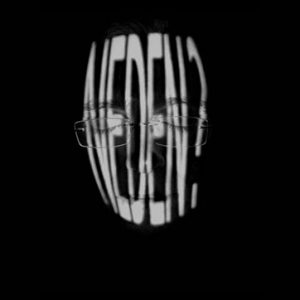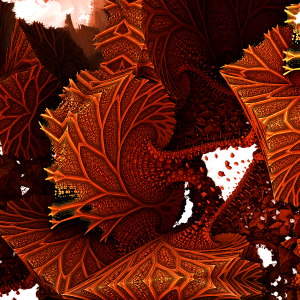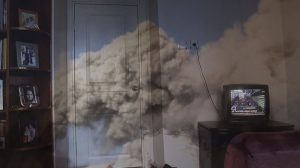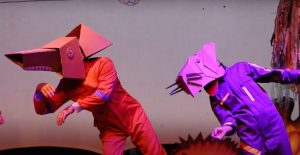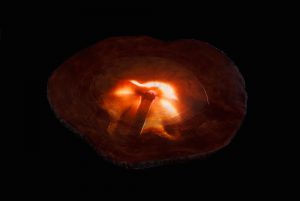THE HOUSES THAT WERE LOST FOREVER CONTINUE TO LIVE ON IN US
Curator: Begüm Güney
Art Talk: Erdal Bilici & Begüm Güney & Yağmur Doğan
18.09.2024
Bilsart presents the second part of the exhibition titled “The Houses That Were Lost Forever Continue To Live On In Us” curated by Begüm Güney, featuring works by Erdal Bilici, from September 18th to September 28th, 2024.
The houses that were lost forever continue to live on in us.*
*Gaston Bachelard
For the exhibition in Bachelard’s vexatious and atemporal philosopy, the daydreamer and the world are intertwined. Prioritizing the dream before thought – the shining and the dreamer before pure and constant thoughts; he cannot accept human as merely thinking entity. “When considering the human being in its entirety, one must flrst recognize that humans are creatures who dream.” He states.
While describing the ways of self-formation at length, he invites us to tranquility. Serenity pertains to the existence of both the world and the daydreamer. The image is the beginning of this existence. Just as it is for an artist… We too become part of the world by following images, and take root here.
Tether by Erdal Bilici, Video Installation, appr. 15 min. 2024
Tether explores the contrast between the iconic and the forgotten, focusing on relics of time that are either cherished or overlooked. The work involves two historic hotels of downtown Copenhagen: the iconic SAS Hotel by Arne Jacobsen and the nearly forgotten Astoria Hotel, the city’s first functionalist building. It starts with a conversation overlooking Astoria’s “hood ornament” sculpture, where two characters discuss unrelated topics—one about forgotten city sculptures, the other about scientific advancements—reflecting Astoria’s split consciousness between history and change. The work transitions into a scene within a vegetated area, where whispers, caves, and a bonfire create a psychological space, then shifts to an ocean setting with waves and distant songs. The exhibition uses traditional cinema, CGI, and photography to create pockets of stories about the human condition, where human presence is depicted as a decoy, merely a display or voice, inviting the audience into the narrative.
Tether, Video, 12 min., 2024, Erdal Bilici
Cast: Clara Dessau, Mishael Fapohunda
Script Editor and Supervisor: Nanna Friis
Editing and CGI: Erdal Bilici
Director of Photography: Søren Rye
Underwater Imagery: Rosa Halfdan Quistorff
Color Grade: Victor Knötzel
Producer: Furkan Dönmezer, Dilek Aydin – Haymatlos Films
Sound Recordist: Frej Vollander
Camera Assistant: Frederik Gusk
Sound Design: Mia Terry
Music: Clarissa Connely, vio lino
Special Thanks:
Philip Ullman, Siri Hammarén, Freja Kirk, Hotel SAS, Astoria Hotel, Oliver Strandvig Holm, Michelle Exarhos, Matthew Post, Simon Dybbroe Møller, Manuel Graf, Nanna Abel, Frederik Exner, Cyprien Gaillard, Oscar Pedersen, Dilek Aydın, Nurşen Bakır, Nina Nadig, Amalie Lorentzsen, Jules Racjhman, Oskar Koliander, Marion Reuther, Maria Catalina Heitmann, Rasmus Daugbjerg, Can Küçük, Mikkel Ulriksen, Morph, Marco Stoltze, Niels Christensen, Yılmaz Şen, Utku Önal
+++, 4 min, 2024 by Erdal Bilici
Embodying a quote from Fanny Howe, +++ explores an imaginary and perhaps a psychological space between two characters, a voice and a listener.
Oyuncular: Erik Hjørnevik
Montaj ve CGI: Erdal Bilici
Renk Düzenlemesi: Victor Knötzel
Ses Tasarımı: Mia Terry
Kindly supported by Danish Arts Foundation.
Click here for the press kit.
ABOUT ERDAL BİLİCİ
Born in Van, Erdal Bilici studied Cinema at Bilgi University and completed his BA and MA in Sculpture at the Royal Danish Academy of Fine Arts. His works have been shown in various exhibitions including Kunsthal Charlottenborg, Nikolaj Kunsthal, Gl Strand, Den Frie and Mamut Art Project. Since 2018, he has been organizing exhibitions with a group of artists at the project space *Jennifee-See* in Copenhagen.
Erdal Bilici’s work explores how the logic of images permeates our ordinary reality and how perceptual technologies intervene in our understandings of place, property, history, nature and biography. In his video, installation, photography, sculpture, writing and sound works, Bilici often combines cinematic and photographic patterns, computer-generated imagery and objects and signifiers from everyday life to address how representation is always embedded in desire and idealization, and thus in notions of control, but also in the notion of connection.


